Construction of energy-conserving sucrose utilization pathways for improving poly-γ-glutamic acid production in Bacillus amyloliquefaciens
- PMID: 28587617
- PMCID: PMC5461702
- DOI: 10.1186/s12934-017-0712-y
Construction of energy-conserving sucrose utilization pathways for improving poly-γ-glutamic acid production in Bacillus amyloliquefaciens
Abstract
Background: Sucrose is an naturally abundant and easily fermentable feedstock for various biochemical production processes. By now, several sucrose utilization pathways have been identified and characterized. Among them, the pathway consists of sucrose permease and sucrose phosphorylase is an energy-conserving sucrose utilization pathway because it consumes less ATP when comparing to other known pathways. Bacillus amyloliquefaciens NK-1 strain can use sucrose as the feedstock to produce poly-γ-glutamic acid (γ-PGA), a highly valuable biopolymer. The native sucrose utilization pathway in NK-1 strain consists of phosphoenolpyruvate-dependent phosphotransferase system and sucrose-6-P hydrolase and consumes more ATP than the energy-conserving sucrose utilization pathway.
Results: In this study, the native sucrose utilization pathway in NK-1 was firstly deleted and generated the B. amyloliquefaciens 3Δ strain. Then four combination of heterologous energy-conserving sucrose utilization pathways were constructed and introduced into the 3Δ strain. Results demonstrated that the combination of cscB (encodes sucrose permease) from Escherichia coli and sucP (encodes sucrose phosphorylase) from Bifidobacterium adolescentis showed the highest sucrose metabolic efficiency. The corresponding mutant consumed 49.4% more sucrose and produced 38.5% more γ-PGA than the NK-1 strain under the same fermentation conditions.
Conclusions: To our best knowledge, this is the first report concerning the enhancement of the target product production by introducing the heterologous energy-conserving sucrose utilization pathways. Such a strategy can be easily extended to other microorganism hosts for reinforced biochemical production using sucrose as substrate.
Keywords: Bacillus amyloliquefaciens; Energy-conserving pathway; Phosphoenolpyruvate (PEP)-dependent phosphotransferase system (PTS); Poly-γ-glutamic acid (γ-PGA); Sucrose permease; Sucrose phosphorylase; Sucrose utilization pathway.
Figures
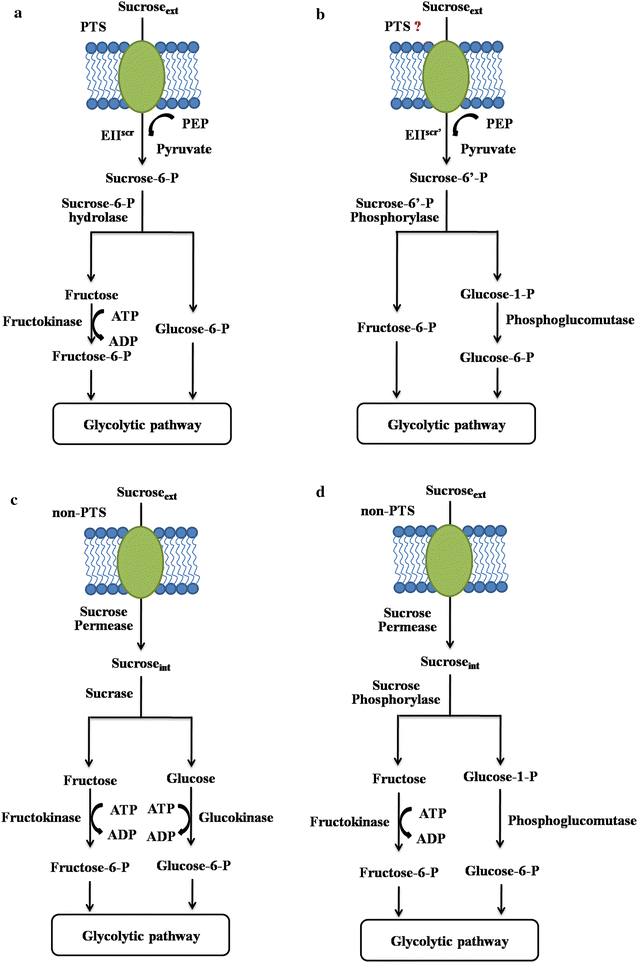
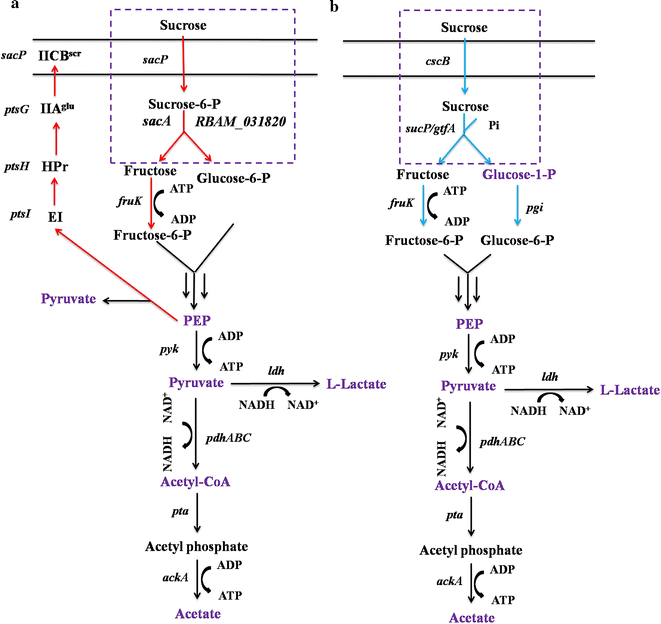
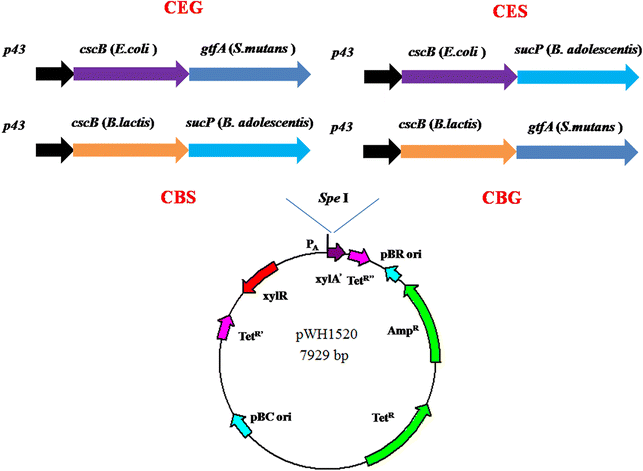
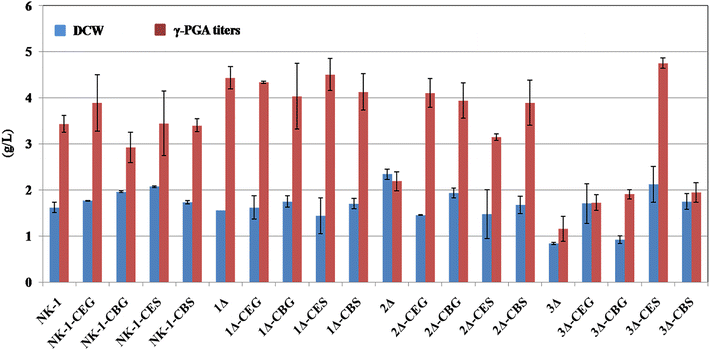
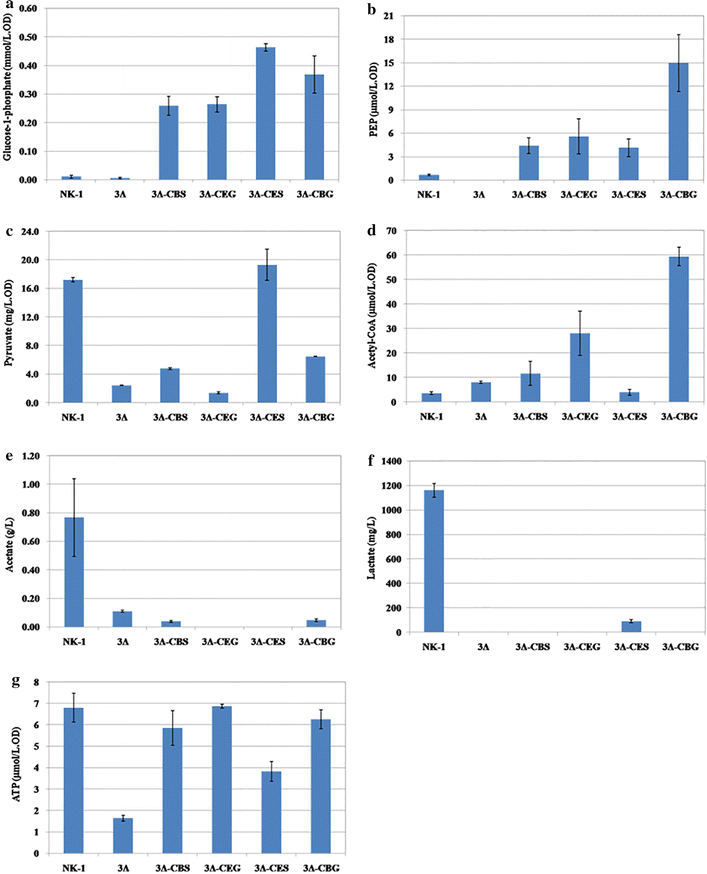
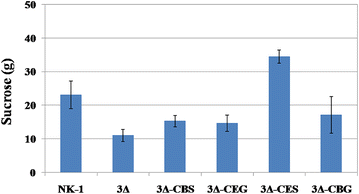
Similar articles
-
Genetic and metabolic engineering for poly-γ-glutamic acid production: current progress, challenges, and prospects.World J Microbiol Biotechnol. 2022 Aug 28;38(11):208. doi: 10.1007/s11274-022-03390-6. World J Microbiol Biotechnol. 2022. PMID: 36030456 Review.
-
Enhancing poly-γ-glutamic acid production in Bacillus amyloliquefaciens by introducing the glutamate synthesis features from Corynebacterium glutamicum.Microb Cell Fact. 2017 May 22;16(1):88. doi: 10.1186/s12934-017-0704-y. Microb Cell Fact. 2017. PMID: 28532451 Free PMC article.
-
Metabolic engineering of Bacillus amyloliquefaciens LL3 for enhanced poly-γ-glutamic acid synthesis.Microb Biotechnol. 2019 Sep;12(5):932-945. doi: 10.1111/1751-7915.13446. Epub 2019 Jun 20. Microb Biotechnol. 2019. PMID: 31219230 Free PMC article.
-
Improved poly-γ-glutamic acid production in Bacillus amyloliquefaciens by modular pathway engineering.Metab Eng. 2015 Nov;32:106-115. doi: 10.1016/j.ymben.2015.09.011. Epub 2015 Sep 26. Metab Eng. 2015. PMID: 26410449
-
Genetic and metabolic engineering for microbial production of poly-γ-glutamic acid.Biotechnol Adv. 2018 Sep-Oct;36(5):1424-1433. doi: 10.1016/j.biotechadv.2018.05.006. Epub 2018 May 28. Biotechnol Adv. 2018. PMID: 29852203 Review.
Cited by
-
Genetic and metabolic engineering for poly-γ-glutamic acid production: current progress, challenges, and prospects.World J Microbiol Biotechnol. 2022 Aug 28;38(11):208. doi: 10.1007/s11274-022-03390-6. World J Microbiol Biotechnol. 2022. PMID: 36030456 Review.
-
Evolution of Phosphorylase Activity in an Ancestral Glycosyltransferase.ACS Catal. 2024 Feb 13;14(5):3103-3114. doi: 10.1021/acscatal.3c05819. eCollection 2024 Mar 1. ACS Catal. 2024. PMID: 38449530 Free PMC article.
-
Recent Advances in Microbial Synthesis of Poly-γ-Glutamic Acid: A Review.Foods. 2022 Mar 2;11(5):739. doi: 10.3390/foods11050739. Foods. 2022. PMID: 35267372 Free PMC article. Review.
-
Enhanced sucrose fermentation by introduction of heterologous sucrose transporter and invertase into Clostridium beijerinckii for acetone-butanol-ethanol production.R Soc Open Sci. 2021 Sep 22;8(9):201858. doi: 10.1098/rsos.201858. eCollection 2021 Sep. R Soc Open Sci. 2021. PMID: 34567584 Free PMC article.
-
Isolation and optimization of Bacillus thuringiensis BRB-3 isolated from germinated black upland rice seeds for GABA production.Heliyon. 2025 Jan 11;11(3):e41884. doi: 10.1016/j.heliyon.2025.e41884. eCollection 2025 Feb 15. Heliyon. 2025. PMID: 39916844 Free PMC article.
References
-
- Renouf MA, Wegener MK, Nielsen LK. An environmental life cycle assessment comparing Australian sugarcane with US corn and UK sugar beet as producers of sugars for fermentation. Biomass Bioenerg. 2008;32:1144–1155. doi: 10.1016/j.biombioe.2008.02.012. - DOI
-
- Shih IL, Chen LD, Wu JY. Levan production using Bacillus subtilis natto cells immobilized on alginate. Carbohydr Polym. 2010;82:111–117. doi: 10.1016/j.carbpol.2010.04.030. - DOI
MeSH terms
Substances
LinkOut - more resources
Full Text Sources
Other Literature Sources
Miscellaneous

